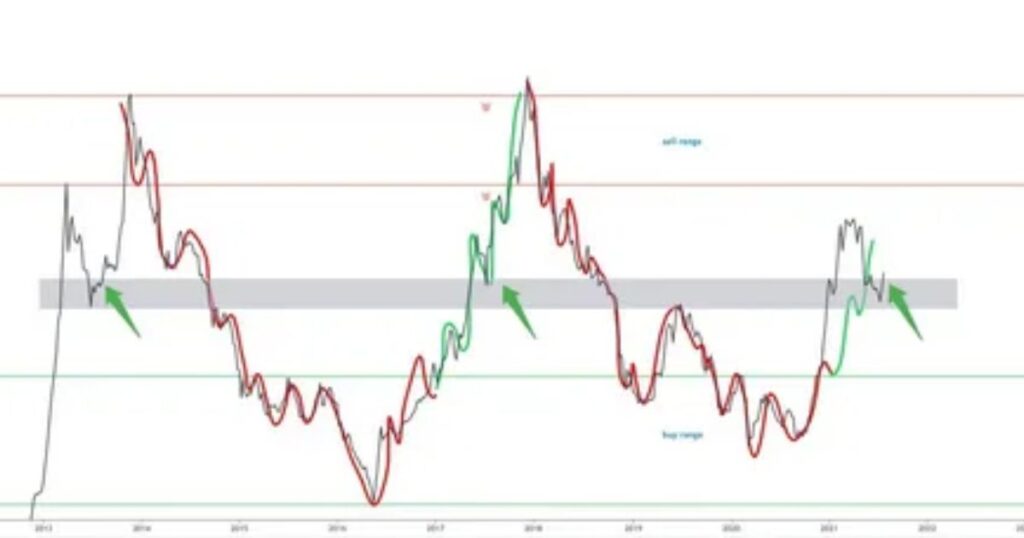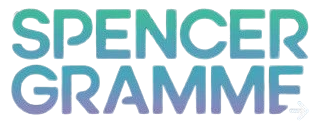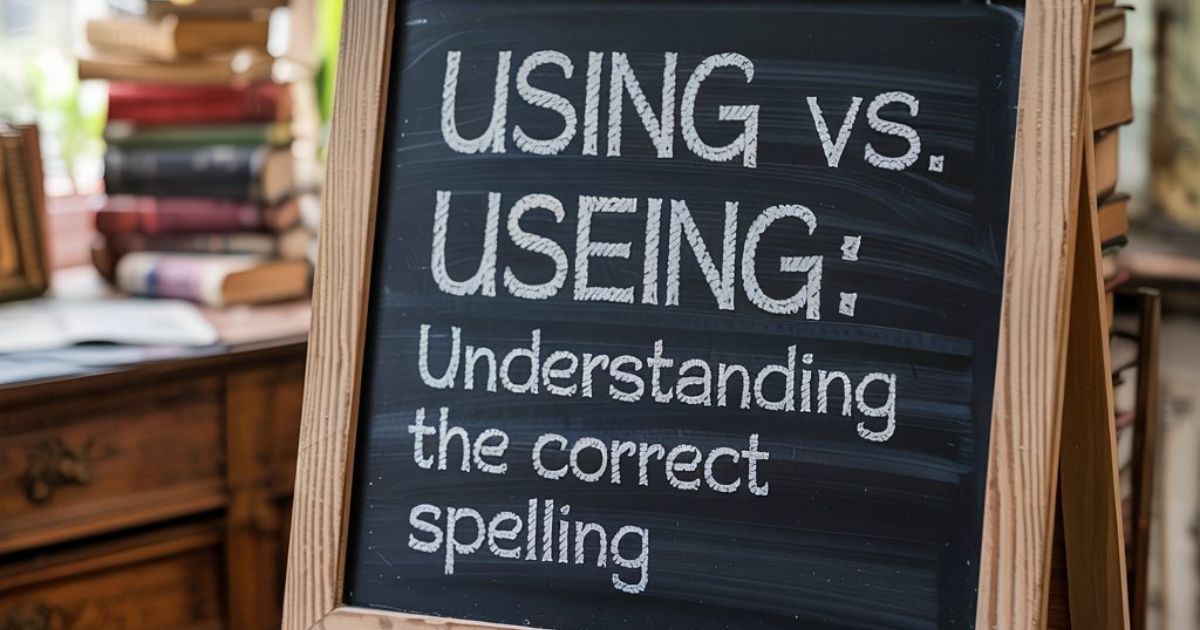When it comes to the spelling of “Using vs. Useing,” many people get confused. The correct spelling is “Using”, but “Useing” is a common mistake. This confusion often arises when people are unsure about how to spell “using” or the word “uses.” The right form to use in most situations is “Using,” and understanding this difference can help improve your writing. So, when you’re asking yourself, “how do you spell using” or “how do you spell uses,” remember that “Using vs. Useing” is an easy fix once you know the rule.
The key difference in “Using vs. Useing” lies in the rule that when you add “-ing” to “use,” the final “e” is dropped, making it “using” and not “useing.” This rule applies in all cases, whether you’re unsure about “useing or using” or simply looking for the correct usage spelling. Understanding this simple rule will help you avoid errors and make your writing clearer.
Understanding Using and Useing

The difference between “using” and “useing” is primarily a matter of correct spelling and grammar. While “using” is the correct and widely accepted form, “useing” is an incorrect spelling. Let’s dive into both to understand Using vs. Useing in better way.
Using: Definition and Usage
“Using” is the present participle or gerund form of the verb “use.” It typically refers to the action of employing something for a particular purpose or function. “Using” is a correct and commonly accepted term in English, and it can be used in various contexts: Examples:
- I am using my phone to check the weather.
- She was using the computer when I arrived.
Useing: Definition and Usage
“Useing” is an incorrect spelling of “using.” It is a common mistake, but it does not exist in standard English. The correct form of Using vs. Useing to use is always “using,” not “useing.” Summary: “Using” is the proper and grammatically correct form of the word. “Useing” is a misspelling and should be avoided.
Side-by-Side Comparison
| Aspect | Using | Useing |
| Definition | Present participle or gerund of “use,” indicating the action of employing or utilizing something. | Not a standard word; a common misspelling of “using.” |
| Grammatical Usage | Correct form used in continuous tenses or as a noun (gerund). | Incorrect form; no recognized grammatical usage. |
| Examples | – “She is using the phone.”- “I enjoy using my computer.” | – Incorrect: “She is useing the phone.”- Correct: “She is using the phone.” |
| Spelling | Standard, correct spelling. | Misspelling, not used in formal writing or speech. |
| Common Mistakes | None; it’s a correctly spelled and used term. | Often mistakenly used instead of “using.” |
| Correct Form | “Using” is always the proper choice. | “Useing” should be avoided and corrected to “using.” |
Key Differences
- Using: Common and essential in both written and spoken English.
- Useing: Rarely seen except as a typographical mistake or misspelling.
- Using: The correct form of the verb “use” when in its present participle or gerund form.
- Useing: An incorrect spelling of “using” and not a recognized word in standard English.
From Using vs. Useing, “Using” is the correct and standard form, while “useing” is simply an incorrect form that should be avoided.
The Root of the Confusion: “Using” vs. “Useing”
The confusion between Using vs. Useing is common, but understanding the cause behind it can help avoid mistakes. The primary issue stems from the way we pronounce the word “use” and the misconception that the “e” at the end should remain when adding “-ing.” In reality, English grammar requires dropping the “e” when forming the present participle or gerund, making “using” the correct form.
Email Correspondence
In email correspondence, spelling and grammar errors can quickly diminish your credibility. While casual conversations may allow some leniency, professional communication requires attention to detail. Using “useing” instead of “using” can come across as careless and unprofessional.
- “I am using this software to prepare the report.”
- “I am useing this software to prepare the report.”
A simple spelling mistake like “useing” can be easily avoided by double-checking your writing, ensuring that emails maintain professionalism.
Academic Writing
Academic writing demands precision and attention to detail. Misspelling words like “using” as “useing” could lead to confusion and reduce the credibility of the writer. Ensuring spelling accuracy in this context is vital to presenting well-researched and thoughtful content.
- “The researcher is using the data to analyze trends.”
- “The researcher is useing the data to analyze trends.”
Accurate spelling in academic papers not only boosts clarity but also enhances your authority as a writer.
Business Proposals
In business proposals, every detail matters. A misspelled word can detract from the seriousness of your proposal, making it seem less polished. “Useing” instead of “using” can negatively affect the perception of your document’s professionalism.
- “We are using advanced techniques to ensure optimal results.”
- “We are useing advanced techniques to ensure optimal results.”
For a business proposal to succeed, it’s important to maintain high standards of language, spelling, and presentation.
Social Media Posts
Social media is more informal, but that doesn’t mean spelling mistakes can be overlooked. Whether you’re managing a personal account or a brand’s profile, misspelled words like “useing” can affect how your audience views you. Even in casual posts, it’s a good idea to use correct spelling for credibility and engagement.
- “I’m using this app to enhance my workflow!”
- “I’m useing this app to enhance my workflow!”
Even on social media, using correct spelling of Using vs. Useing can help establish trust and maintain a professional online presence.
Everyday Usage Examples of “Using”
- “I am using a knife to chop the vegetables.”
- “She is using a blender to make a smoothie.”
- “He’s using the printer to print the reports.”
- “We’re using a new software to streamline the process.”
- “I’m using my phone to check my emails.”
- “They are using the laptop for online meetings.”
- “The coach is using video footage to analyze the game.”
- “I’m using my new tennis racket today.”
- “She’s using her camera to take pictures at the event.”
- “We are using a GPS app to find the best route.”
Related Guide:
Choosing or Chosing? Get It Right Every Time
Synonyms for “Using”
- Employing
- Utilizing
- Applying
- Handling
- Exploiting
- Operating
- Manipulating
- Wielding
- Consuming
- Harnessing
Techniques to Remember Correct Spelling
Here are some helpful techniques to master spelling, especially when it comes to commonly confused words like Using vs. Useing.
1. Drop the -E Rule
Many words in English follow a rule where you drop the final “e” before adding an “ing” or similar suffix. Understanding this rule can help you remember the correct spelling of words like “using” (from “use”).
Example:
- “Use” becomes “using.”
- “Make” becomes “making.”
- “Write” becomes “writing.”
By internalizing this rule, you can more easily spot when the “e” should be dropped.
2. Visualization
Visualizing the correct form of a word can be a powerful memory tool. Try to imagine the word “using” written out or picture it in your mind’s eye. This mental image helps reinforce the correct spelling.
Example: Visualize “using” on a computer screen or a written note. The more you picture it, the more likely you’ll recall the right spelling in the future.
3. Mnemonic Rhymes
Creating a rhyme or song around a word can make spelling easier to remember. Mnemonics work well because they tap into your memory through rhythm and rhyme.
Example:
- “When you want to show what’s in use, drop the E and just add ‘ing’ to let loose.”
4. Repetition Practice
One of the most effective ways to remember spelling is through repetition. Writing the word several times or typing it repeatedly helps reinforce the spelling in your brain.
Example: Write “using” 10 times, and each time, focus on how you form the word. This method helps commit the correct spelling to memory.
5. Check Similar Words
Look for other words that follow the same spelling pattern. When you notice similarities between “using” and other words like “making” or “writing,” it can help reinforce the rule.
Example: Notice how words like “hiking,” “writing,” and “playing” drop the “e” and add “ing.” These examples can help you remember that “use” follows the same pattern.
6. Associate with Synonyms
Connecting the word you’re trying to remember with a synonym that is easier to spell can help you recall the correct form.
Example: Associate “using” with the synonym “employing”, which might be easier for you to spell. Thinking about one can help trigger the memory of the other.
7. Say It Out Loud
Saying a word out loud can reinforce how it’s spelled. By hearing the word, you’re less likely to make mistakes when writing it.
Example: When writing the word “using,” say it aloud, emphasizing the “u-s-i-n-g” sounds. This auditory cue strengthens your memory of the correct spelling.
8. Review Common Mistakes
Regularly review words that you tend to misspell, like “using” versus “useing.” By identifying and correcting your common errors, you can avoid making the same mistakes in the future.
Example: Keep a list of frequently misspelled words in a notebook. Review them periodically to ensure you’re not repeating past mistakes.
Tips to Avoid Mistakes in Spelling “Using” vs. “Useing”
To avoid confusing Using vs. Useing, it’s important to keep a few tips in mind:
- Understand the Rule: The word “use” drops the final “e” when the “-ing” suffix is added. Always remember, “using” is the correct form, and “useing” is a common misspelling.
- Pay Attention to Spelling Patterns: Words ending in “e” usually drop the “e” before adding “-ing” (e.g., “make” → “making,” “write” → “writing”). This rule applies to “use” as well.
- Proofread: Before sending or publishing anything, double-check for spelling errors, especially when words like “using” are involved. Reading your writing aloud can also help spot mistakes.
- Use Spelling Tools: Take advantage of spell check tools, but always verify the corrections, as some errors may still slip through.
- Practice: Regularly writing words like “using” and focusing on the “-ing” rule will reinforce the correct spelling in your mind.
Correct and Incorrect Sentences Using “Using” and “Useing”
- Correct: She is using the new software to track her expenses.
Incorrect: She is useing the new software to track her expenses. - Correct: They are using sustainable materials for the construction project.
Incorrect: They are useing sustainable materials for the construction project. - Correct: We are using a new method to improve productivity.
Incorrect: We are useing a new method to improve productivity. - Correct: I’ve been using this app to monitor my health.
Incorrect: I’ve been useing this app to monitor my health. - Correct: The company is using advanced technology to enhance services.
Incorrect: The company is useing advanced technology to enhance services. - Correct: I am using my free time to read a book.
Incorrect: I am useing my free time to read a book. - Correct: They are using a team approach to solve the problem.
Incorrect: They are useing a team approach to solve the problem. - Correct: He is using a combination of tools to repair the car.
Incorrect: He is useing a combination of tools to repair the car. - Correct: I am using a map to find the quickest route.
Incorrect: I am useing a map to find the quickest route. - Correct: She is using natural ingredients in her cooking.
Incorrect: She is useing natural ingredients in her cooking. - Correct: They are using the latest research to develop the drug.
Incorrect: They are useing the latest research to develop the drug. - Correct: I am using a pen to sign the document.
Incorrect: I am useing a pen to sign the document. - Correct: We are using a professional photographer for the event.
Incorrect: We are useing a professional photographer for the event. - Correct: She is using her creativity to solve the design challenge.
Incorrect: She is useing her creativity to solve the design challenge. - Correct: I am using my phone to check the schedule.
Incorrect: I am useing my phone to check the schedule.
Popularity Analysis

From Using vs. Useing is the word “using” is overwhelmingly more popular and correct than “useing” in all types of writing, whether casual or formal. “Useing” is considered a common spelling mistake, and when typed into search engines or spelling databases, it appears significantly less frequently than “using.”
Key Points of Popularity:
- Correct Usage: “Using” is the standard form, found in all reputable sources, including books, academic papers, business writing, and digital content. It is the preferred spelling in nearly all contexts.
- Incorrect Usage: “Useing” is rarely found in professional or academic texts, as it is viewed as a spelling error. Most spell-check tools will flag “useing” as incorrect.
- Search Trends: A quick search reveals that “using” dominates search results, while “useing” generates minimal hits, typically related to spelling mistakes or informal communication.
In summary, “using” is the overwhelmingly popular and correct choice, and “useing” is rarely used except as a typo. Regular practice and awareness of spelling rules can help eliminate such mistakes in your writing.
FAQ’s
What is the correct spelling for using in a sentence?
The correct spelling is “using,” not “useing.” This is the accurate form according to the rules of Using vs. Useing.
How do you know if “useing” is wrong?
“Useing” is incorrect because it doesn’t follow the rule. The correct version in Using vs. Useing is “using.”
Why is “useing” a common mistake?
“Useing” is a common misspelling because people forget to drop the “e.” In Using vs. Useing, always use “using.”
How can I avoid spelling mistakes between these words?
To avoid mistakes, just remember the rule for Using vs. Useing: drop the “e” from “use” before adding “-ing.”
When should I use “using” instead of “useing”?
You should always use “using” in place of “useing” in writing. This ensures correctness when considering Using vs. Useing.
Conclusion
Understanding “Using vs. Useing” is crucial for correct spelling. The correct form is always “using,” not “useing.” Whenever you find yourself wondering “how do you spell using,” just remember that “using” follows a simple rule: drop the final “e” from “use” when adding “-ing.” This rule will help you avoid confusion and ensure your writing is accurate. Whether you’re asking “how do you spell uses” or questioning “useing or using,” the correct spelling is always “using.”
When it comes to usage spelling, keep in mind that “Using vs. Useing” is a straightforward distinction. Once you understand the rule, you’ll have no trouble using the right form in any situation. So, the next time you’re writing, remember to choose “using” over “useing,” and your spelling will always be correct.

Ember Rose is a dedicated administrator with 4 years of experience in efficient operations management and team leadership. Skilled in streamlining workflows and enhancing productivity.

